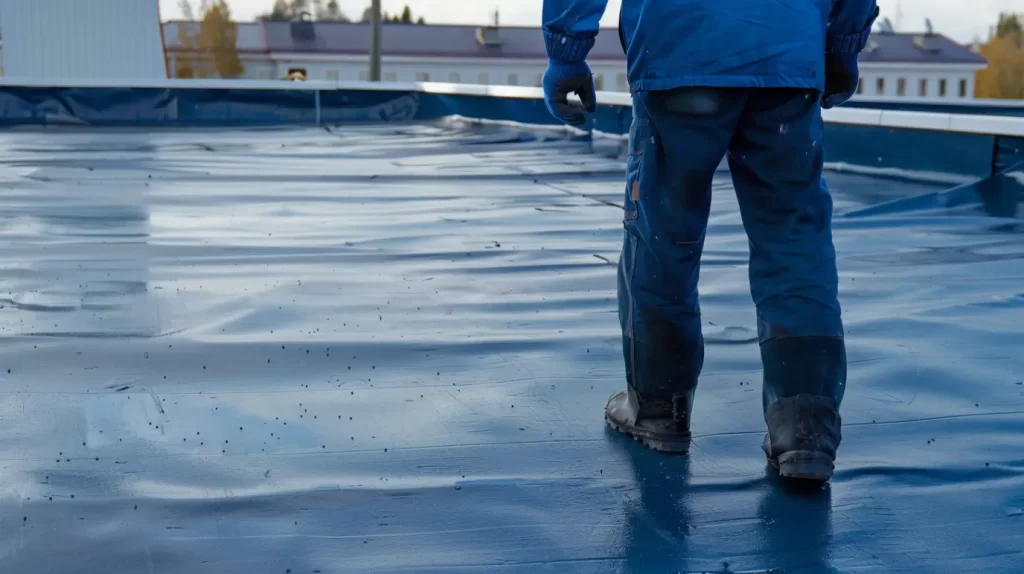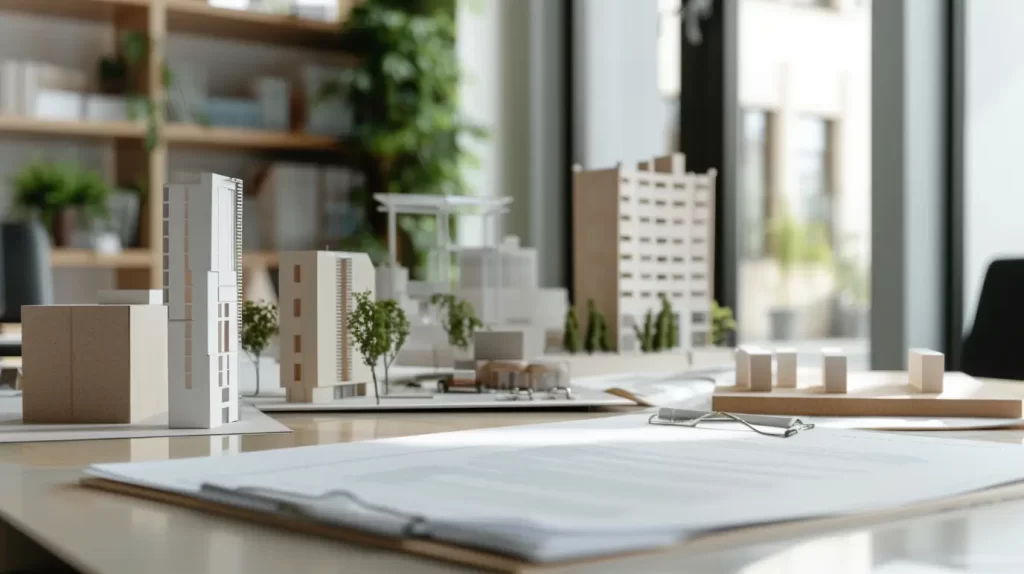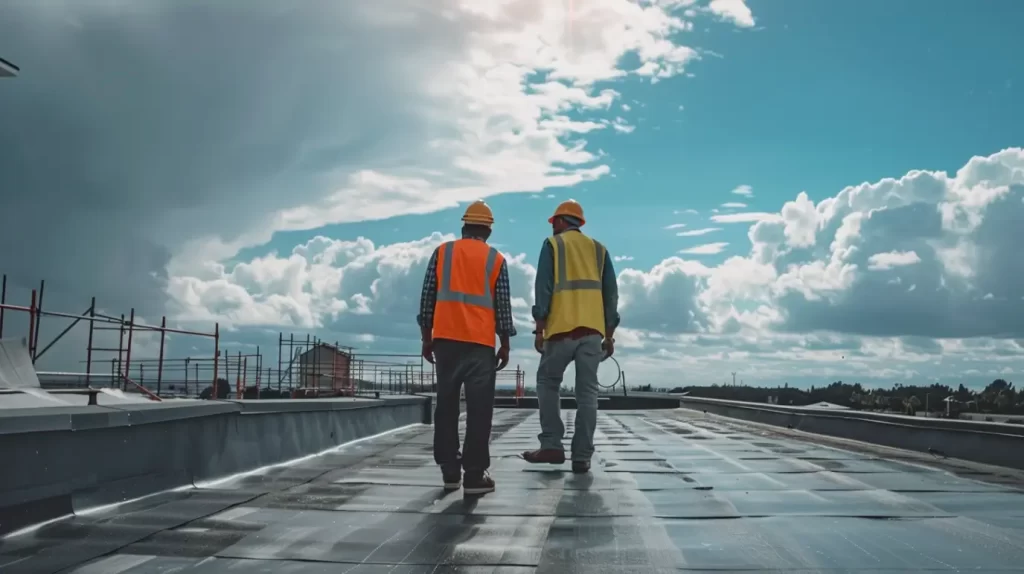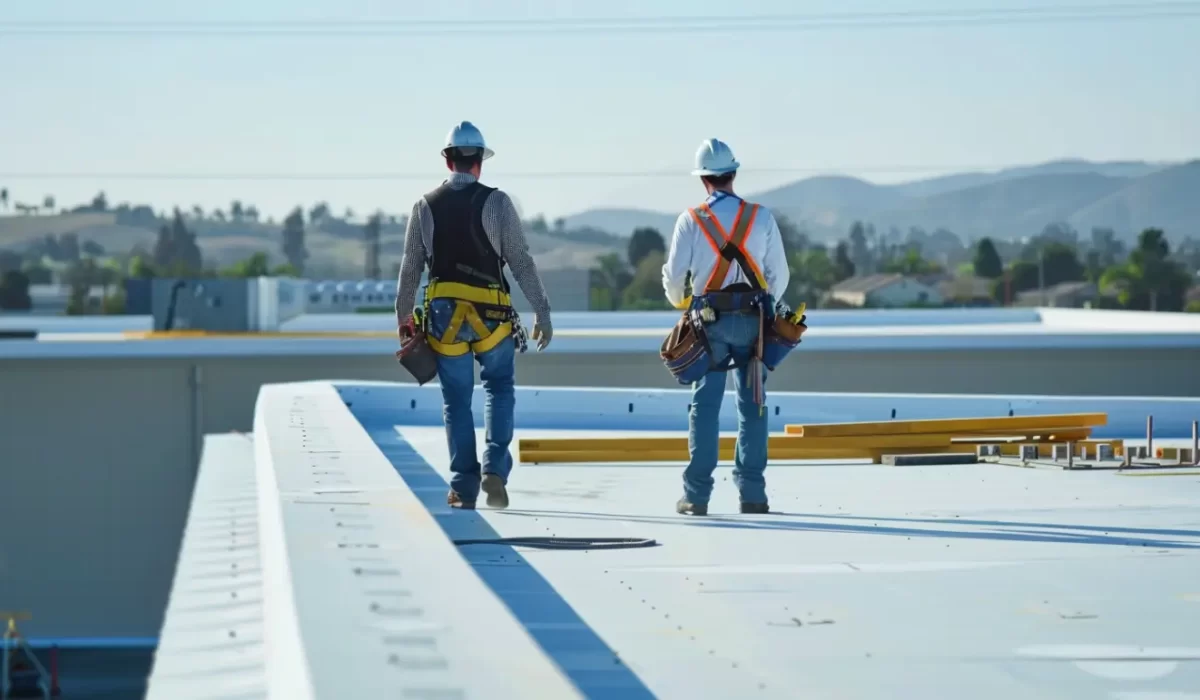In Anaheim, CA, effective roof inspections are vital for maintaining commercial buildings. Fontaine Roofing assists property managers and HOAs with expert assessments, especially for multi-roof structures. We prioritize quality by using premium materials and reliable inspection methods. Our thorough inspections help ensure your buildings remain sturdy and protect your investment over time, regardless of the size or number of properties. Trust us to maintain optimal roof conditions for your needs.
The Importance of Evaluating Roof Conditions for Multiple Structures
Regular roof evaluations are crucial for property managers and homeowners associations (HOAs) overseeing multiple buildings. Consistent assessments help identify visible damage and minor issues early, preventing costly repairs and ensuring the roof’s longevity.
Understanding the unique vulnerabilities of various roofing materials enhances assessment accuracy. Each structure should be evaluated based on building codes and structural integrity. Utilizing advanced technologies and professional inspections allows for a comprehensive analysis of drainage systems and rooftop equipment, preserving asset value and providing peace of mind.
Contact Us
Preserving Asset Value for HOAs
Maintaining a roofing system is essential for property managers and Homeowners’ Associations (HOAs) to preserve asset value. Regular evaluations reveal the roof’s condition and identify potential issues before they lead to costly repairs. This proactive approach ensures effective management of roofing investments, aligning with building codes and standards.
Routine inspections can detect red flags like visible damage and water infiltration, facilitating informed maintenance and repair decisions. By prioritizing roof condition, property managers and HOAs enhance aesthetics, structural integrity, and overall property value while securing peace of mind.
Preventing Expensive Repairs
Early detection of roofing issues can prevent costly repairs. Regular assessments help identify minor problems, like water stains or visible damage, before they worsen. A proactive monitoring approach allows property owners to address issues such as inadequate insulation or structural concerns promptly, preserving the roof’s integrity and the property’s value.
Investing in professional inspections offers vital insights into roofing material longevity and performance. Understanding different roofing systems and their weather responses aids in devising effective repair strategies. This foresight ensures compliance with building codes and maintains optimal energy efficiency throughout the building.

Steps to Conduct a Thorough Multi-Building Roof Assessment
A comprehensive multi-building roof assessment involves key steps to ensure the longevity and performance of each roofing system. Property owners should begin with visual inspections, checking for damage signs such as water stains, roof deck issues, and drainage problems. Addressing these early warnings can prevent costly repairs from water infiltration and poor insulation.
After initial assessments, hiring professionals for further evaluations enhances quality. Advanced technologies like core sampling and infrared thermography offer a deeper understanding of the roofing system’s health. Regular assessments are crucial for maintaining structural integrity and safeguarding the property owner’s investment.
Initial Visual Inspections and Common Red Flags
Thorough initial visual inspections are essential for identifying potential roofing issues. Property managers should watch for red flags like visible damage, water stains on ceilings, and signs of infiltration around drainage systems and rooftop equipment. Early assessment helps detect structural problems that could jeopardize your roof’s longevity.
In addition to visible damage, monitor for weather-induced wear, particularly in areas prone to severe conditions. Minor issues can escalate into costly repairs or premature replacement if neglected. A proactive inspection approach ensures the roofing system’s integrity and provides peace of mind for property owners.
Professional Assessments and Utilizing Advanced Technologies
Professional roof inspections go beyond surface evaluations. Utilizing advanced tools, they provide a comprehensive assessment of commercial roofs. Drones access hard-to-reach areas, while core sampling examines structural integrity and uncovers hidden issues.
Moisture sensors detect water infiltration and evaluate insulation effectiveness. These technologies quickly identify weaknesses in the building envelope, ensuring no critical problems are overlooked.
Fontaine Roofing employs these tools for thorough assessments. Their experienced team combines hands-on expertise with cutting-edge technology, delivering actionable insights for property managers and HOAs. This streamlined process simplifies inspections and instills confidence when managing multiple properties.

Creating a Standardized Roof Condition Checklist
Consistency is crucial when assessing roof conditions across properties. A standardized roof condition assessment checklist ensures best practices are followed, allowing for uniform evaluation of structural issues and roofing components.
To create this checklist, focus on key aspects such as water infiltration, minor issues, and the health of the roof deck. A single evaluation method enhances report accuracy and facilitates clear comparisons between different sites. This approach greatly benefits commercial roof inspections, enabling property managers to allocate resources effectively and schedule repairs timely.
Key Factors to Include for Consistent Evaluation
A thorough roofing assessment evaluates key factors for consistent analysis across structures. The age and type of materials impact longevity, influencing maintenance schedules and budgets. Visible damage—such as water stains, cracks, or blisters—can indicate structural issues.
Evaluating drainage systems is crucial to prevent water infiltration and ensure roof performance. Energy efficiency is also important; poor insulation can lead to costly repairs and a shorter lifespan. Addressing these elements supports proactive roof management, giving property managers and building owners peace of mind. Regular evaluations enable informed decision-making and effective repair strategies.
Tailoring Roof Checklists by Material & Structure
Roofs vary in materials and types, necessitating tailored checklists for effective commercial inspections. Flat roofs require attention to standing water, while tile and metal roofs need checks for fastening and rust.
New constructions must comply with building codes, ensuring roof assemblies integrate with the entire building envelope. Updating your checklist for these factors keeps inspections relevant and compliant.
Property managers and HOAs can benefit from collaborating with skilled roofing contractors to customize inspection methods. Tailoring the checklist to specific materials and structures enhances monitoring, aids early problem detection, and extends roof life.

Roof Inspection Frequency
Effective roof management involves planning regular inspections for all buildings, considering weather conditions and their age. Routine checks allow you to identify and address issues early, facilitating insurance claims if needed.
Inspect commercial roofs biannually and after severe weather to maintain structural integrity. Timely inspections enable strategic repairs, preventing premature roof replacements and protecting your investment while providing peace of mind to owners.
Recommended Inspection Schedules to Minimize Risk
Regular roof inspections help building owners minimize risks and reduce repair costs. Inspect your roof twice a year, before and after harsh weather, to safeguard against overlooked issues—this is industry best practice.
For diverse properties, schedule inspections after severe weather or new construction. Maintain detailed records and condition reports to streamline repairs and communicate effectively with insurance companies.
A proactive maintenance schedule allows property managers to identify problems early, enabling better budgeting, prioritizing repairs, and extending the roof’s lifespan. Organized documentation is also useful for future roof replacements or upgrades in commercial buildings.
How Severe Weather Shapes Inspection Plans
Severe weather events greatly impact roof inspection strategies. After storms or extreme weather, prompt assessments are crucial to identify issues like visible damage, water infiltration, or compromised integrity. Property managers and owners should prioritize inspections during adverse conditions to address minor problems before they become costly repairs.
Incorporating advanced weather forecasting into inspection schedules can optimize resources. Understanding the link between severe weather patterns and roof longevity enables proactive measures, such as reinforcing structures or improving drainage. Regular evaluations after weather events protect roofing investments, enhancing energy efficiency and providing peace of mind.
Let’s Make It Happen
Regular roof inspections are crucial for property managers and HOAs to protect investments. Using a checklist allows you to identify early warning signs and prevent costly repairs. Maintain a consistent inspection schedule and check roofs after severe weather to prolong their lifespan and preserve property value. At Fontaine Roofing, we provide professional, reliable service tailored to your needs. Contact us today to ensure your roofs remain strong for years to come!
Read our blog: Roofing’s Role in Total Building Energy Strategy
Frequently Asked Questions
What are the most common mistakes property managers make in roof evaluations?
Property managers often neglect regular roof inspections, missing minor issues and failing to document visible damage. Ignoring early signs of wear can result in costly repairs or premature replacements. Effective roof management requires timely routine checks and thorough record-keeping.
Should an engineering firm be consulted for evaluating complex portfolios?
Consulting an engineering firm is wise when managing challenging portfolios. Their experts are well-versed in structural issues and building codes, including commercial roofing. This expertise ensures accurate advice for building owners, facilitating compliance with regulations and effective planning—especially crucial when overseeing multiple properties or high-value spaces.

